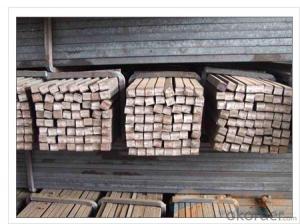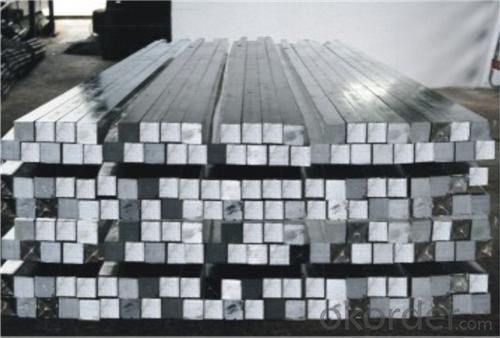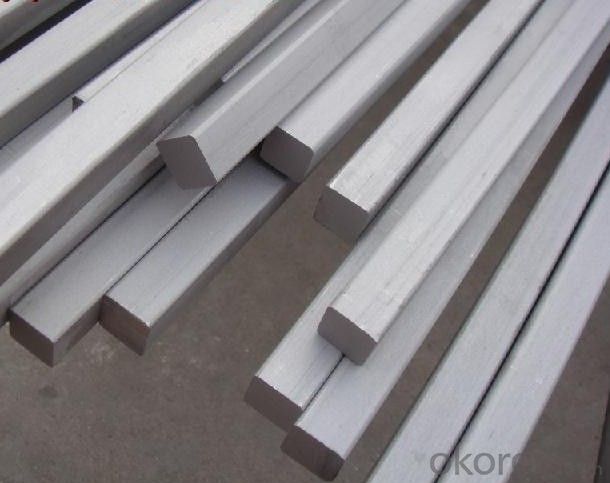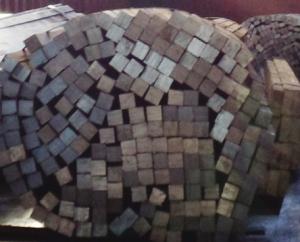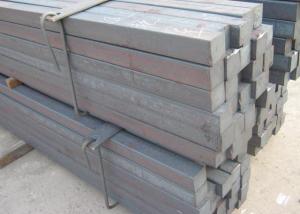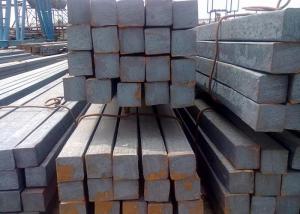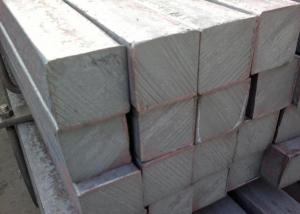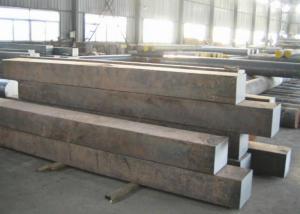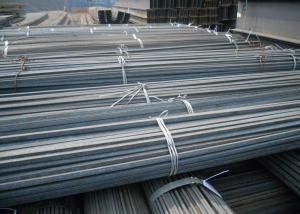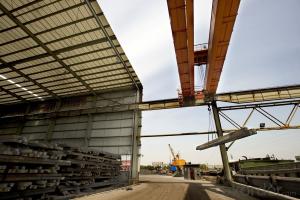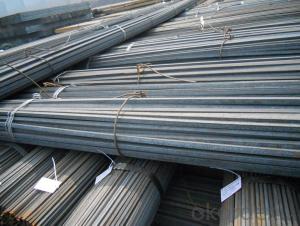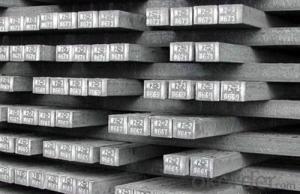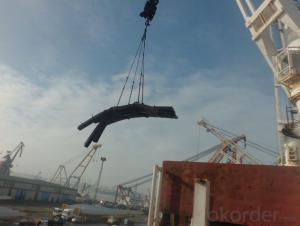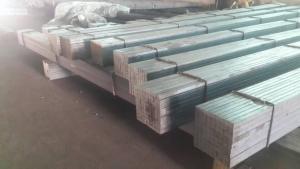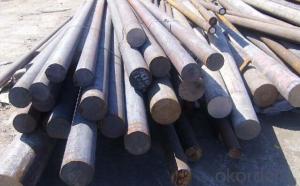Hot Rolled Square Carbon Steel Bar with Many Sizes
- Loading Port:
- China Main Port
- Payment Terms:
- TT or LC
- Min Order Qty:
- -
- Supply Capability:
- -
OKorder Service Pledge
OKorder Financial Service
You Might Also Like
Product Description:
OKorder is offering Square Bar at great prices with worldwide shipping. Our supplier is a world-class manufacturer of steel, with our products utilized the world over. OKorder annually supplies products to European, North American and Asian markets. We provide quotations within 24 hours of receiving an inquiry and guarantee competitive prices.
Product Applications:
-The Square Steel is normally used as structure steel.
-Row material for other structure steel like steel angles, channels, I-beams, H-beams, etc…
Product Advantages:
OKorder's Square Bar are durable, strong, and resist corrosion.
Main Product Features:
· Premium quality
· Prompt delivery & seaworthy packing (30 days after receiving deposit)
· Corrosion resistance
· Can be recycled and reused
· Mill test certification
· Professional Service
· Competitive pricing
Product Specifications:
1. Grade: Q195, Q235, Q345
2. Diameter: 6mm-150mm
3. Length: 6m, 9m, 12m or as customer’s request
4. Tolerance: Within ±5% for weight; ±2mm for diameter
5. Note: The price can be better is the quantity is good
6. Chemical composition
Standard | Grade | Element (%) | ||||
C | Mn | S | P | Si | ||
GB | Q195 | 0.06~0.12 | 0.25~0.50 | ≤0.050 | ≤0.045 | ≤0.30 |
GB | Q235B | 0.12~0.20 | 0.30~0.70 | ≤0.045 | ≤0.045 | ≤0.30 |
-Mechanical Properties:
Mechanical Properties | Grade | Steel diameter(mm) | |||
≤16 | 16~40 | 40~60 | 60~100 | ||
Yield Point Δs/MPa | Q195 | ≥195 | ≥185 | - | - |
Q235 | 235 | 225 | 215 | 205 | |
Tensile Strength | Q195 | 315~390 | |||
Q235 | 375~500 | ||||
Elongation δ5% | Q195 | ≥33 | ≥32 | - | - |
Q235 | 26 | 25 | 24 | 23 | |
Payment:
-Invoicing on theoretical weight or actual weight as customer’s request.
-FOB, CFR or CIF.
-Regular terms of payment:
1, 30% payment in advance, the remaining balance (70% payment) against the copy of B/L.
2, 30% payment in advance, the remaining balance (70% L/C) against the copy of B/L.
3, Negotiable.
FAQ:
Q1: Why buy Materials & Equipment from OKorder.com?
A1: All products offered byOKorder.com are carefully selected from China's most reliable manufacturing enterprises. Through its ISO certifications, OKorder.com adheres to the highest standards and a commitment to supply chain safety and customer satisfaction.
Q2: How do we guarantee the quality of our products?
A2: We have established an advanced quality management system which conducts strict quality tests at every step, from raw materials to the final product. At the same time, we provide extensive follow-up service assurances as required.
Q3: How soon can we receive the product after purchase?
A3: Within three days of placing an order, we will begin production. The specific shipping date is dependent upon international and government factors, but is typically 7 to 10 workdays.
Q4: What makes stainless steel stainless?
A4: Stainless steel must contain at least 10.5 % chromium. It is this element that reacts with the oxygen in the air to form a complex chrome-oxide surface layer that is invisible but strong enough to prevent further oxygen from "staining" (rusting) the surface. Higher levels of chromium and the addition of other alloying elements such as nickel and molybdenum enhance this surface layer and improve the corrosion resistance of the stainless material.
Images:
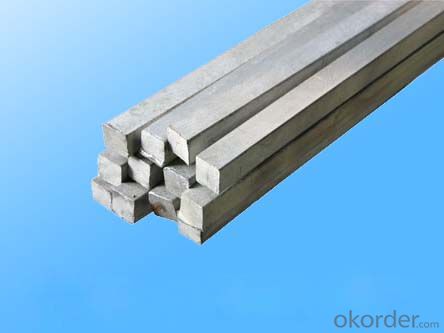
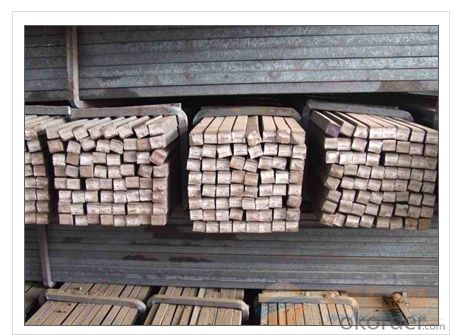
- Q: Can a steel square be used for checking the squareness of a jointer guard?
- No, a steel square cannot be used for checking the squareness of a jointer guard. A steel square is primarily used for checking the squareness of edges and corners, and it may not provide accurate results when used for checking the squareness of a jointer guard. Jointer guards have specific angles and dimensions that need to be aligned properly for safety and optimal performance. It is recommended to use the appropriate tools and methods recommended by the manufacturer or consult a professional to ensure the correct squareness of a jointer guard.
- Q: How does a steel square assist in determining the correct angle for a sliding dovetail joint?
- A steel square assists in determining the correct angle for a sliding dovetail joint by providing a reliable and accurate measurement tool. A sliding dovetail joint requires precise angles to ensure a tight and secure fit between the two mating pieces. When using a steel square, it can be placed against the edge of the board or workpiece to establish a right angle or 90-degree angle. This is important as the sliding dovetail joint typically requires a 90-degree angle to create a strong and seamless joint. The steel square can be used to mark the layout lines on the workpiece by aligning it with the edge and drawing a line along the edge of the square. This helps to ensure that the angle is consistent and accurate throughout the joint. Additionally, the steel square can be used to check the angle of the dovetail joint during the cutting process. By placing the square against the joint, it can help verify that the angle is correct and that the cutting is being done accurately. Overall, a steel square serves as a valuable tool in determining the correct angle for a sliding dovetail joint, providing accuracy and precision throughout the joint-making process.
- Q: What is the purpose of a steel square?
- The purpose of a steel square, also known as a framing square or carpenter's square, is to assist in the construction and layout of right angles. It is a versatile tool used by carpenters, woodworkers, and other tradespeople to measure, mark, and cut various angles and lengths accurately. A steel square typically consists of two arms, a long one called the blade and a shorter one called the tongue. These arms are joined at a 90-degree angle, forming a precise right angle. The blade is marked with various measurements and angles, allowing for precise calculations and layout. One of the primary uses of a steel square is to determine and mark right angles. By aligning the blade and tongue against the edges of a board or a wall, a carpenter can ensure that the corners are perfectly square. This is crucial for constructing frames, rafters, stairs, and other structures that require precise angles. Furthermore, a steel square can be used to measure and mark angles other than 90 degrees. By utilizing the marked angles on the blade, one can easily measure and cut common angles like 45 degrees or 30 degrees. This makes it a valuable tool for tasks such as mitering corners, making bevel cuts, or creating accurate angles in woodworking projects. Overall, the purpose of a steel square is to provide a reliable and efficient way to establish and work with right angles and various angles in construction and woodworking. It helps ensure accuracy, efficiency, and quality in the process of measuring, marking, and cutting, making it an indispensable tool for professionals and hobbyists alike.
- Q: How is a steel square different from a framing square?
- A steel square and a framing square are both versatile tools used in carpentry and construction, but they have different designs and purposes. A steel square, also known as a rafter square or carpenter's square, is a small, handheld tool typically made of steel. It consists of two arms, a shorter one called the tongue and a longer one called the blade, meeting at a right angle. The blade usually has scales and markings to measure angles and lengths. Steel squares are primarily used for measuring and marking right angles, determining the squareness of corners, and laying out or checking angles for cuts. They are commonly used in tasks that require precision, such as framing, roofing, and stair construction. On the other hand, a framing square, also called a carpenter's square, is a larger tool typically made of aluminum or steel. It consists of a long arm called the blade and a shorter arm called the tongue, joined together at a right angle. The blade is wider and often has multiple scales and markings for measuring different angles, lengths, and cuts. Framing squares are primarily used in rough carpentry and framing applications, such as laying out and marking rafters, stairs, or walls. They are essential for ensuring accurate and consistent measurements and cuts in larger-scale construction projects. In summary, while both a steel square and a framing square are useful tools in carpentry and construction, they differ in size, design, and purpose. A steel square is smaller, handheld, and primarily used for measuring and marking right angles, while a framing square is larger, often with multiple scales, and used in rough carpentry tasks to ensure precise measurements and cuts.
- Q: Can a steel square be used for checking the alignment of a jointer table?
- Certainly, a steel square has the capability to verify the alignment of a jointer table. This tool, known for its versatility, serves multiple purposes in woodworking, one of which is assessing the alignment of machinery. To evaluate the jointer table's alignment, simply position the steel square against both the fence and table of the jointer, ensuring absolute perpendicularity. This step will enable you to ascertain whether the jointer table is correctly aligned or necessitates adjustments. It is crucial to employ a top-notch steel square that guarantees precision and dependability for accurate outcomes.
- Q: Can a steel square be used for welding?
- Indeed, welding can make use of a steel square. A steel square, known for its versatility, is frequently utilized in welding tasks to guarantee precise measurements and right angles. It serves as a guiding tool to thoroughly inspect the alignment and squareness of weld joints, ensuring their proper placement and welding at a 90-degree angle. Moreover, a steel square can be employed to measure and mark materials before cutting or welding, guaranteeing meticulous dimensions. In summary, a steel square plays a vital role in the welding process as it assists in attaining top-notch and precise welds.
- Q: Can a steel square be used for measuring and marking compound miter and bevel cuts?
- Indeed, the utilization of a steel square is viable in the measurement and marking of compound miter and bevel cuts. Although its conventional purpose is to measure and mark right angles, it can also serve the purpose of measuring and marking angles for compound miter and bevel cuts. By relying on the measurements and angles obtained from the steel square, it becomes possible to accurately mark the cuts on the material prior to execution. Nevertheless, it should be acknowledged that for intricate and precise compound miter and bevel cuts, the employment of specialized tools such as a miter saw or a bevel gauge might be indispensable.
- Q: Can a steel square be used for checking the squareness of a door frame opening?
- Yes, a steel square can be used for checking the squareness of a door frame opening. A steel square, also known as a framing square or a carpenter's square, is a versatile tool commonly used in carpentry and construction. It has a right angle shape, with one long arm and one shorter arm, allowing it to be used for measuring and checking angles, as well as testing the squareness of objects. To check the squareness of a door frame opening, you can place the steel square against the inside corner of the frame, ensuring that the long arm aligns with one side of the frame and the shorter arm aligns with the other side. If the frame is perfectly square, the square's edges will lie flush against both sides of the frame. However, if the frame is not square, there will be a gap between the square and one or both sides of the frame, indicating that adjustments need to be made. Using a steel square provides a reliable and accurate method for checking the squareness of a door frame opening. It allows you to identify any discrepancies and make the necessary adjustments to ensure that the door will fit properly and function correctly.
- Q: How do you use a steel square to find the square footage of a pool?
- In order to determine the square footage of a pool using a steel square, several steps must be followed. Begin by ensuring that the steel square is free from any dirt or debris, as this will ensure precise measurements. Proceed to measure the length and width of the pool utilizing the steel square. Align one side of the square with the pool's edge and extend it until it reaches the opposite side. Take note of the measurement displayed on the steel square. Repeat this process for the pool's width, positioning the steel square against one side and extending it until it reaches the other side. Once again, note the measurement on the steel square. Upon obtaining both the length and width measurements, multiply them together to calculate the pool's square footage. For instance, if the length measures 20 feet and the width measures 10 feet, the total square footage would be determined by multiplying 20 by 10, resulting in 200 square feet. Keep in mind that this technique assumes that the pool has a simple rectangular shape. If the pool possesses irregular or curved edges, this method may not yield an accurate measurement of the square footage. In such instances, it is recommended to consult a professional or employ alternative methods, such as using a measuring tape or laser distance meter, to obtain precise measurements.
- Q: How do you use a steel square to determine the angle of a roof truss?
- To use a steel square to determine the angle of a roof truss, you would need to follow these steps: 1. Start by placing the steel square against the edge of the truss where the angle needs to be measured. Make sure the square is aligned properly and securely against the truss. 2. Take note of the scale on the steel square. This scale usually consists of numbers and lines that represent degrees. The most common steel square has scales for measuring 90 degrees, 45 degrees, and 30 degrees. 3. Locate the line on the scale that corresponds to the desired angle you are trying to measure. For example, if you want to determine the angle of a truss that is 30 degrees, find the line on the scale that reads 30 degrees. 4. Next, align the line on the steel square that corresponds to the desired angle with the edge of the truss. This line should be parallel to the truss edge. 5. Once the line on the steel square is aligned with the truss edge, check the other side of the square. There should be another line or edge that intersects with the truss. This intersecting point will give you the angle measurement. 6. Read the angle measurement directly from the scale on the steel square at the intersecting point. This will give you the exact angle of the roof truss. Remember to ensure that the steel square is properly aligned and securely positioned against the truss to get accurate measurements. Additionally, it is essential to use the correct scale on the steel square that matches the desired angle you are trying to determine.
Send your message to us
Hot Rolled Square Carbon Steel Bar with Many Sizes
- Loading Port:
- China Main Port
- Payment Terms:
- TT or LC
- Min Order Qty:
- -
- Supply Capability:
- -
OKorder Service Pledge
OKorder Financial Service
Similar products
Hot products
Hot Searches
Related keywords
